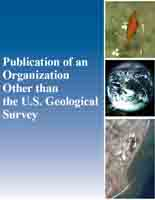Waterfowl breeding habitat in agricultural and nonagricultural land in Manitoba
Links
- More information: Publisher Index Page (via DOI)
- Download citation as: RIS | Dublin Core
Abstract
Waterfowl populations and habitat characteristics were examined on 33 potholes in each of two 16-square-mile study areas of agricultural and nonagricultural land in southwestern Manitoba. The agricultural land potholes, lacking in or incompletely surrounded by trees, received greater use by lesser scaup (Aythya affinis), canvasback (A. valisineria), redhead (A. americana), coot (Fulica americana), and three species of grebes (Podicipedidae). The nonagricultural land potholes, completely surrounded by trees, were more attractive to blue-winged teal (Anas discors), and mallard (A. platyrhynchos), and over twice as many dabbler broods were censused there. Abundant, undisturbed nesting cover may have been the reason for greater dabbler use on the nonagricultural land potholes since chemical and biological properties suggest more fertile conditions in the agricultural land.
Study Area
| Publication type | Article |
|---|---|
| Publication Subtype | Journal Article |
| Title | Waterfowl breeding habitat in agricultural and nonagricultural land in Manitoba |
| Series title | Journal of Wildlife Management |
| DOI | 10.2307/3799499 |
| Volume | 34 |
| Issue | 1 |
| Year Published | 1970 |
| Language | English |
| Publisher | Wiley |
| Contributing office(s) | Northern Prairie Wildlife Research Center |
| Description | 7 p. |
| First page | 130 |
| Last page | 136 |
| Country | Canada |
| Other Geospatial | Manitoba |


